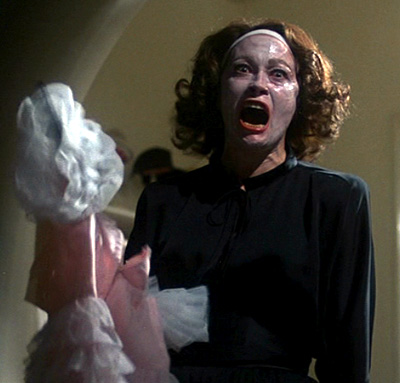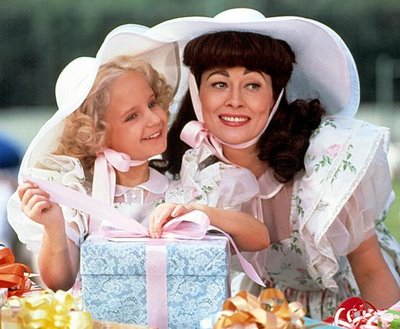 Splatter Cinema presents SLEEPAWAY CAMP (1983); Dir. Robert Hiltzik; Starring Felissa Rose and Jonathan Tiersten; Tuesday, June 10 @ 9:30 p.m. (free photos in a recreation of a scene from the film start @ 9:00 p.m.); Plaza Atlanta; Trailer here.
Splatter Cinema presents SLEEPAWAY CAMP (1983); Dir. Robert Hiltzik; Starring Felissa Rose and Jonathan Tiersten; Tuesday, June 10 @ 9:30 p.m. (free photos in a recreation of a scene from the film start @ 9:00 p.m.); Plaza Atlanta; Trailer here.
By Aleck Bennett
Contributing Writer
Friday the 13th is upon us this week, and Splatter Cinema has taken the bold step of avoiding Crystal Lake altogether. Instead, they and the Plaza Theatre bring you a blood-soaked classic from another camp: Robert Hiltzik’s SLEEPAWAY CAMP!
Horror movies are disreputable. If you have any doubts about that, ask yourself how many horror films have won Oscars versus, say, movies from any other genre. Ask yourself how many times a horror movie has been handicapped right out of the gate by critics for simply being a horror film. Ask yourself how many times a great horror film has received only qualified praise (“it’s good…for a horror movie”).
So, yeah. Disreputable. Marginalized. Ostracized.
But slasher flicks? Doubly so. At least.
Sure, they’re typically formulaic. Then again, so are gangster pictures. So are westerns. So are films noir. (Nobody walks into DOUBLE INDEMNITY and thinks, “I’m sure Fred MacMurray is going to get out of this just fine.”) But limitations sometimes produce great art. John Carpenter’s HALLOWEEN? Great art. Hitchcock’s PSYCHO? Great art. Tobe Hooper’s THE TEXAS CHAIN SAW MASSACRE? Great art.
SLEEPAWAY CAMP? Well, not even I am going to argue that this is great, much less art. But it’s fascinating. Sure, it was obviously designed to capitalize on the whole “people are getting slaughtered at a summer camp” trend that was raking in bucketloads of cash in the 1980s, and as a knockoff of an already-critically-maligned series, it’s automatically more disreputable than most. But it’s visceral and pulpy in a way that 90% of FRIDAY THE 13TH films most definitely aren’t. It constantly teeters on the brink of ridiculousness, has a definite and palpable sense of danger, and pulls off the most insane climax of any entry in the slasher movie subgenre.
 The plot is paper-thin, seeming to be merely a hook upon which to hang multiple corpses. Introverted Angela and her protective cousin Ricky are sent to Camp Arawak for the summer. There, she is bullied and attacked by a series of people, all of whom wind up dead at the hand of an unseen killer stalking the campgrounds. Superficially, this doesn’t appear that different from most entries in the FRIDAY series. But one thing that sets SLEEPAWAY CAMP apart is whom the film targets.
The plot is paper-thin, seeming to be merely a hook upon which to hang multiple corpses. Introverted Angela and her protective cousin Ricky are sent to Camp Arawak for the summer. There, she is bullied and attacked by a series of people, all of whom wind up dead at the hand of an unseen killer stalking the campgrounds. Superficially, this doesn’t appear that different from most entries in the FRIDAY series. But one thing that sets SLEEPAWAY CAMP apart is whom the film targets.
Typically, in FRIDAY THE 13TH movies, most of the victims are the camp’s counselors and staff, generally vulnerable women (and the occasional vulnerable guy). Their deaths are all the more likely if they have just had sex, are contemplating having sex in the near future, or have a passing interest in potentially having sex at some point in their lives. But in SLEEPAWAY CAMP, most of the people who get killed are the campers themselves. In slasher cinema, this is generally not done. It’s out of bounds. Kids are innocents, and our killers’ knives are out for those who have transgressed some kind of warped code of adult morality. But not here. At Camp Arawak, the kids and adults are jerks and bullies, and nobody is safe. This alone would make the movie one of the more morally questionable entries in the slasher field. Add in the increasingly bizarre ways in which people are slaughtered (beehive? curling iron?) and you’ve got reprehensibility writ large.
 But beyond the victims being targeted and the means of their destruction, what also makes this film stand out from its competitors is its relentlessly odd tone. There are tons of slashers that attempt to inject some humor into the mix, but few do it with as straight a face as this movie. Other films, for instance, might play up the character of camp owner Mel Costic as an over-the-top bit of comic relief, as he constantly tries to spin the series of outlandish murders as simple accidents. But while he’s obviously something of a caricature, he’s no more or less overtly comic than any other adult in the picture. He’s the equivalent of Paul Bartel in Joe Dante’s PIRANHA: a comic authority figure, but not a jokey figure. He is, at least, more relatable than Angela’s aunt Martha, who seems to exist in some weird state of hyper-eccentricity that feels like it’s been borrowed from some other movie altogether. The presence of renowned character actors like Mike Kellin (as the aforementioned Mel Costic) and Robert Earl Jones (father of James) lends a level of credence and gravity to these roles that would otherwise be ham-handedly played for comedic effect. As a whole, the character work in the movie seems to work on an almost delirious TWIN PEAKS-ish level, where we’re thrown off because what we’re seeing is funny, but it’s not parodic or written as explicit comedy. And when it combines with the horror of the film’s content, it’s…off-puttingly humorous.
But beyond the victims being targeted and the means of their destruction, what also makes this film stand out from its competitors is its relentlessly odd tone. There are tons of slashers that attempt to inject some humor into the mix, but few do it with as straight a face as this movie. Other films, for instance, might play up the character of camp owner Mel Costic as an over-the-top bit of comic relief, as he constantly tries to spin the series of outlandish murders as simple accidents. But while he’s obviously something of a caricature, he’s no more or less overtly comic than any other adult in the picture. He’s the equivalent of Paul Bartel in Joe Dante’s PIRANHA: a comic authority figure, but not a jokey figure. He is, at least, more relatable than Angela’s aunt Martha, who seems to exist in some weird state of hyper-eccentricity that feels like it’s been borrowed from some other movie altogether. The presence of renowned character actors like Mike Kellin (as the aforementioned Mel Costic) and Robert Earl Jones (father of James) lends a level of credence and gravity to these roles that would otherwise be ham-handedly played for comedic effect. As a whole, the character work in the movie seems to work on an almost delirious TWIN PEAKS-ish level, where we’re thrown off because what we’re seeing is funny, but it’s not parodic or written as explicit comedy. And when it combines with the horror of the film’s content, it’s…off-puttingly humorous.
And that’s not even getting into the whole psychosexual aspect of the movie that just traipses giddily all over the line dividing “sympathetic” and “offensive” and builds up to a twist ending that has left jaws firmly planted on floors since 1983.
Upon release, the movie was generally ignored as just another kids-at-camp-getting-killed flick. But even then, there were rumblings of this being something bigger than that. I remember, after first seeing it as a VHS rental, talking with friends of mine about how mind-blowingly nuts the movie was. How inventive the kills were. THAT ENDING. And in the years since, a sizable cult has grown up around this movie as tales of its oddball charms have circulated among horror fans. Today, the movie holds an impressive 82% favorable rating at RottenTomatoes.com. From critics who really ought to know better.
So here we have one of the more disreputable entries in arguably the most disreputable subgenre of an already disreputable genre. And it has developed a large following and overwhelmingly favorable critical consensus. It has traveled the full circle of sleaze all the way back around to ultimate acceptance, like someone made a John Waters movie completely by accident.
So take some time out of your busy mid-week schedule to visit the kids at camp. No, not Crystal Lake. The other one.
Aleck Bennett is a writer, blogger, pug warden, pop culture enthusiast, raconteur and bon vivant from the greater Atlanta area. Visit his blog at doctorsardonicus.wordpress.com



